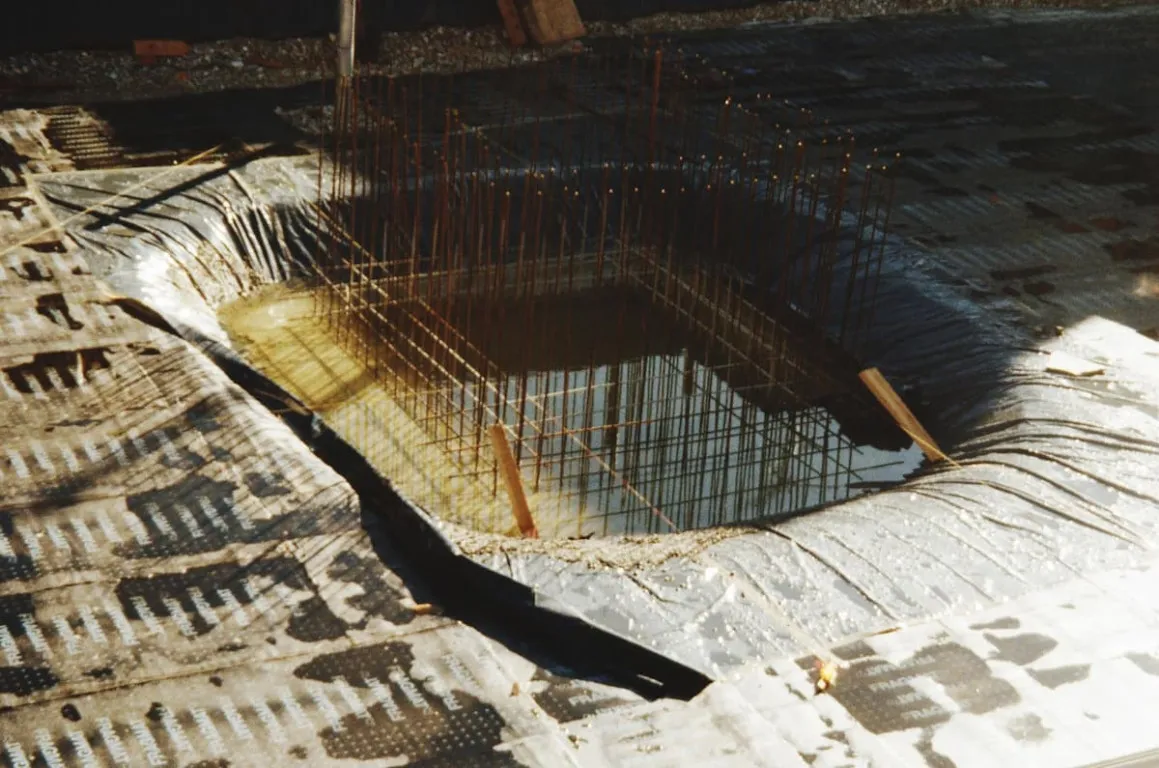One important structure in building construction is the cofferdam, which generally functions as a water barrier in large construction projects such as the construction of bridges, dams, or underwater pipes.
Although it plays a crucial role in various large construction projects, the cofferdam is a temporary structure. Then, how does it work? Read the following article to gain a deeper understanding of its definition, types, and functions.
What Is a Cofferdam?
A cofferdam is a temporary structure used in large construction projects to keep the construction area dry, especially if the construction site is located within a river, lake, or sea.
Additionally, the construction of a cofferdam is also done to protect workers so they can work in a dry place. Cofferdams can be found in various projects, such as bridge construction, dams, underwater tunnels, submarine pipelines, and others.
Originally, the term cofferdam comes from the Dutch, namely 'coffer', which means city, and 'dam', which means building. Some other countries refer to a cofferdam as a caisson. Generally, the construction of a cofferdam consists of waterproof materials, such as concrete and Sheet Pile. This type of material is used to prevent water from entering the work area, thus keeping the work area dry.
Types of Cofferdams in Concrete Construction
Although its main function is to block water from entering the construction area, cofferdams have several types differentiated by their construction purpose. Here are some types of cofferdams you should know:
1. Braced Cofferdam
The first type of cofferdam is the braced cofferdam, which serves to support the walls of the excavation project while also preventing water from entering the work area, as is the main function of the cofferdam.
The structure of a braced cofferdam is made of Sheet Pile stacks equipped with a bracing system that is often used in bridge pillar construction. This type of cofferdam is commonly used in urban areas.
2. Cellular Cofferdam
A cellular cofferdam is a type of cofferdam shaped like a series of cells made from a stack of Sheet Piles. There are two forms of cellular cofferdam, namely the diaphragm and circular.
The shape of the Sheet Pile in this type is interconnected to form a waterproof wall. In the gaps of the constructed walls, soil material is inserted to enhance the cofferdam's resistance to pressure.
3. Cantilever Sheet Pile
This type of cofferdam is made from sheet piles and supported by several materials, such as wood, steel, and concrete. Therefore, cantilever sheet piles are prone to leaking and damage if exposed to flooding.
This structure is suitable for holding water with a maximum depth of 5 meters. It also has a high sensitivity to loud sounds and vibrations, making it easily damaged.
4. Double Wall Sheet Pile
This cofferdam can hold water up to a height of 10 meters due to its structure, made of two layers of parallel vertical walls formed from sheet piles.
Usually, to increase the strength of this type of cofferdam, soil material will be added, and if the height of the vertical wall exceeds 2.5 meters, additional supports will be built to help bear the load and make the wall stand more firmly.
5. Earth Embankment
This type of cofferdam is usually built in areas of water with calm flow because its structure is simple and does not have a completely waterproof barrier. Generally, water that enters through the gaps of the cofferdam will be directed to a single point with clay soil.
During rain, usually sand material will be added to prevent water from entering the cofferdam structure.
6. Rock-Fill Embankment
Last, the type of cofferdam rock-fill embankment made of rockfill material that often functions to seal off the area to be drained. This cofferdam is formed from compacted sand and stone, then allowed to dry naturally.
The characteristics of this type of cofferdam are permeable and usually have a waterproof membrane that can reduce water seepage.
Read also: Strauss Pile Foundation: Method, Advantages, & Disadvantages
Function of Cofferdam in Concrete
The general function of a cofferdam is to protect the work area from water accumulation, but the cofferdam also has other functions. Here are some other functions of a cofferdam:
1. Protecting the Work Area from Contamination
The first function of a cofferdam is to keep the work area free from water contamination, as concrete can potentially be contaminated by substances present in the water. In addition, concrete has pores, making it not entirely waterproof.
2. Producing High-Quality Concrete Pouring
By creating a work area that is sterile from water, the quality of concrete pouring can be improved to be more consistent and high-quality. The presence of water that comes into contact with concrete has the potential to reduce its quality and integrity.
3. Maintaining Project Building Structure
The next function of the cofferdam is to help maintain the project building structure by keeping the environment dry and ensuring the structure remains safe from water flowing from the surrounding project area, as well as ensuring the safety of workers.
4. Maintaining Work Efficiency
The cofferdam also helps maintain work efficiency so that the work area remains easy and safe for the workers. Workers can continue to perform their duties without being disturbed by water flow or weather conditions affecting the water flow that may hinder productivity.
5. Preventing Environmental Pollution
Last but not least, the function of a cofferdam is to protect the surrounding environment from being contaminated by project materials and substances by restricting the project work area with flows of water that contain various life ecosystems within them.
Read also: 10 Sustainable Building Materials for Green Constructions
How Cofferdam Works
A cofferdam is one of the common dewatering systems used in various construction projects. Aside from being used in projects located in water areas, a cofferdam can also play a role in underground projects to hold back soil in the construction area.
In building projects in water areas, the cofferdam will be set up around the waterlogged work area. After that, the water inside the area protected by the cofferdam will be pumped out to reduce the water level until the ground bottom of that area is visible.
Once the bottom is visible, the project work can begin. This process is also applied when creating cofferdams for underground projects.
After the project is completed, the cofferdam building will be demolished. This is why the cofferdam is referred to as a temporary structure in project construction. However, the planning and construction of the cofferdam must be done meticulously and carefully due to its crucial function in protecting the main project within it.
That is the various explanations regarding what a cofferdam is, types, functions, and how they work. The construction of a cofferdam will always be an important and irreplaceable structure to help protect construction projects built in water areas or underground.
Therefore, the construction of cofferdams must also be considered carefully, especially the materials used to construct them, which must be of the highest quality, one of which is cement.
As a water-retaining structure, cofferdams play a vital role in creating a safe and dry working area, especially in large-scale projects in wet areas. Therefore, the materials used, such as concrete and cement, must have high quality and resistance to aggressive environments.
Semen Merah Putih PRIMAPLUS is the ideal choice for such needs. This cement product can provide optimal protection against damage from moderate sulfate exposure. It is designed to enhance durability against sulfate attacks and can reduce heat hydration.
Semen Merah Putih PRIMAPLUS is ideal for construction projects that demand high quality and environmental friendliness, such as coastal foundations, water channels, and underground structures.
So, don't hesitate anymore, contact us now to receive suitable product recommendations for construction projects and the most up-to-date information about our various flagship products!
Read also: 11 Types of Cement and the Functions in the Construction



